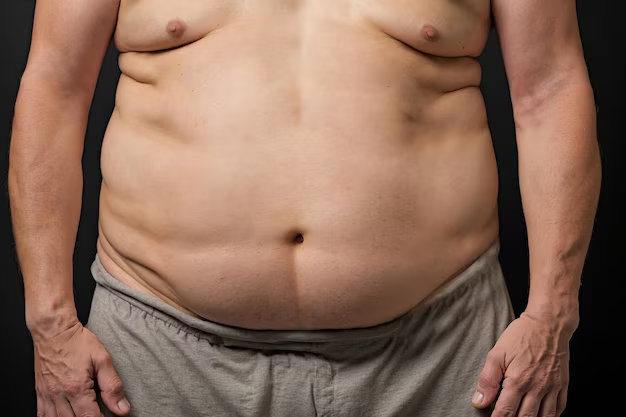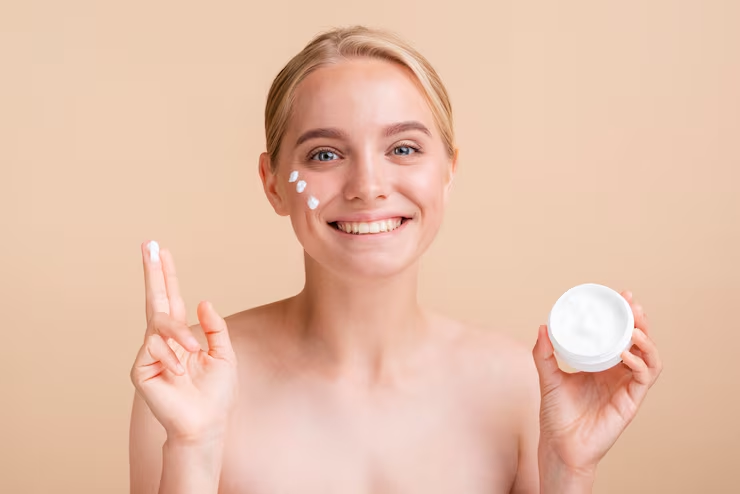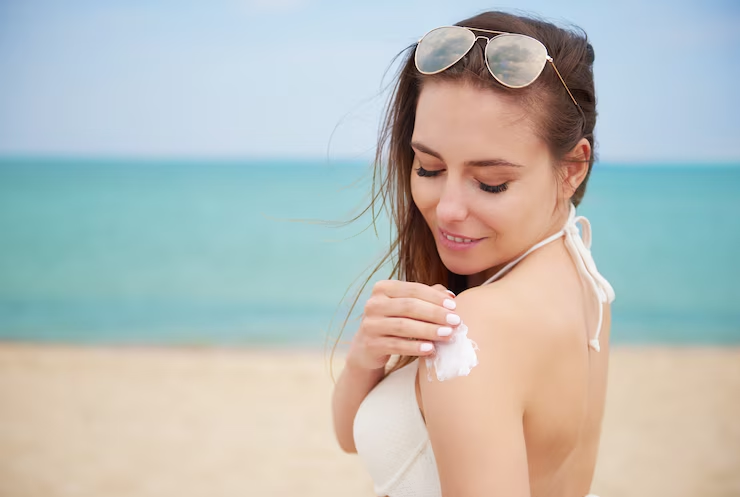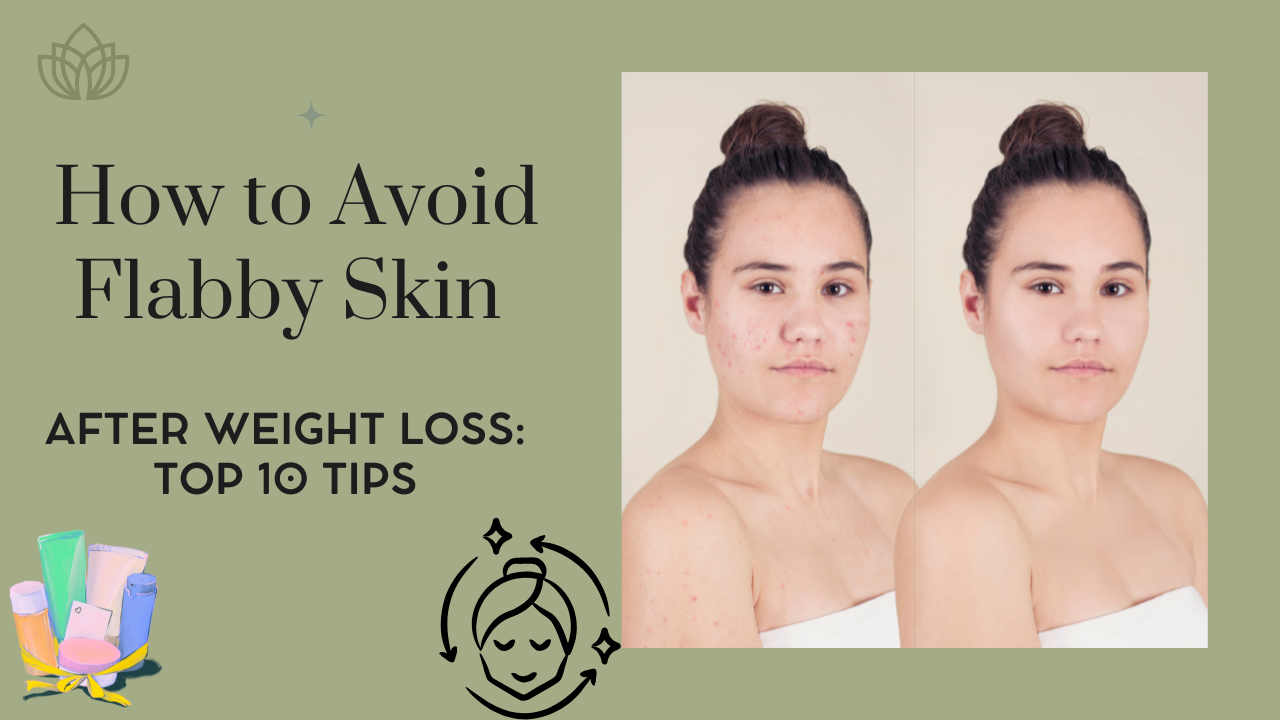Losing weight is a remarkable achievement that reflects discipline, dedication, and commitment. 🌟 However, one common challenge that many people face after significant weight loss is flabby skin. This loose, sagging skin can sometimes overshadow the sense of accomplishment from shedding pounds. Understanding how to avoid flabby skin after weight loss is essential not only for aesthetic reasons but also for overall skin health. Maintaining firm and elastic skin after weight loss ensures that your transformation looks as impressive as your hard work deserves.
The primary reason flabby skin develops after weight loss is the loss of underlying fat that once filled out the skin. When the skin stretches for an extended period, it loses its natural elasticity. Age, genetics, and the speed of weight loss all play significant roles in determining how much your skin will tighten. Rapid weight loss often leaves the skin unable to shrink at the same rate, resulting in loose folds and sagging. Therefore, knowing how to avoid flabby skin after weight loss is crucial to ensure a smooth and toned appearance.
Fortunately, there are numerous strategies to prevent flabby skin and maintain a youthful look. These include proper nutrition, exercise, hydration, skincare, and lifestyle adjustments. By implementing scientifically-backed methods and following a consistent routine, you can effectively minimize loose skin and enhance your body’s overall appearance. In this comprehensive guide, we will explore how to avoid flabby skin after weight loss, why it happens, and the best practices to achieve firm, healthy skin. By the end of this article, you’ll have a complete roadmap to ensure your hard-earned weight loss is complemented by a toned, radiant body. 🌈

What Causes Flabby Skin After Weight Loss?
Flabby skin after weight loss can be a frustrating and unexpected outcome, but understanding its causes is the first step in prevention. One major reason for sagging skin is reduced skin elasticity. Our skin contains collagen and elastin fibers that allow it to stretch and bounce back. Over time, with age, prolonged weight gain, or significant weight fluctuations, these fibers weaken. When weight is lost too quickly, the skin may not have enough elasticity to conform to the new body shape, resulting in loose or flabby areas. Learning how to avoid flabby skin after weight loss starts with understanding these biological factors and addressing them proactively.
Another critical factor is the speed of weight loss. Crash diets, extreme fasting, or overly aggressive workout routines can lead to rapid fat loss. While fast results may seem appealing, they do not give the skin sufficient time to shrink naturally. Gradual weight loss allows the skin to adjust slowly, reducing the likelihood of sagging. Pairing slow weight reduction with strength training and proper nutrition is one of the most effective methods for how to avoid flabby skin after weight loss.
Finally, genetics and age play a significant role. Younger individuals generally have more resilient skin that can bounce back more effectively after weight loss. Conversely, older adults may experience more sagging due to reduced collagen production. Additionally, genetic factors determine how elastic your skin naturally is, which can affect how it responds to changes in body composition. Understanding these underlying causes is essential to develop strategies for how to avoid flabby skin after weight loss, ensuring a toned and healthy appearance.
Why It’s Important to Avoid Flabby Skin
Avoiding flabby skin is more than just an aesthetic concern—it’s about confidence, health, and long-term body satisfaction. Loose skin can affect self-esteem, causing individuals to feel uncomfortable or self-conscious about their appearance. Even after reaching weight loss goals, sagging skin may make some feel as though they haven’t fully transformed. By learning how to avoid flabby skin after weight loss, you ensure that your efforts are visually and physically rewarded.
Maintaining firm, healthy skin involves a combination of proper nutrition, consistent exercise, and adequate hydration. Nutrient-rich foods support collagen production and skin elasticity, while strength training helps build underlying muscle to fill out loose areas. Drinking enough water keeps the skin supple and resilient, reducing the risk of sagging. Implementing these strategies is essential for anyone looking to protect both the health and appearance of their skin while learning how to avoid flabby skin after weight loss effectively.
Moreover, avoiding flabby skin supports the body’s functional fitness. Loose skin can interfere with physical activities, making exercise less comfortable. Toned skin improves mobility, enhances workout performance, and complements the results of weight loss efforts. Ultimately, understanding how to avoid flabby skin after weight loss ensures that your transformation is complete—physically, aesthetically, and psychologically—giving you the confidence to enjoy your new body fully. 🌟
Proven Ways to Avoid Flabby Skin After Weight Loss
Gradual Weight Loss 🐢

Rapid weight loss is one of the primary causes of loose skin. When fat is lost too quickly, the skin does not have sufficient time to adjust to the shrinking body. A gradual weight loss plan allows your skin to naturally contract and reduces the likelihood of sagging. Aim for a safe weight loss of 1–2 pounds per week while monitoring skin elasticity.
One of the most effective ways to prevent loose or sagging skin is to focus on gradual weight loss. Rapid weight loss often leaves the skin unable to adjust to the body’s new shape, resulting in flabbiness. By aiming to lose 1–2 pounds per week, you give your skin time to adapt naturally while preserving muscle mass, which provides underlying support and reduces the risk of sagging. Learning how to avoid flabby skin after weight loss begins with setting realistic, sustainable goals rather than relying on extreme diets or quick fixes.
Gradual weight loss also allows for better integration of strength training and a nutrient-rich diet, both of which play a critical role in maintaining skin elasticity. When you lose weight slowly, your body retains more protein and essential nutrients that support collagen production. These factors combined enhance the skin’s ability to contract and conform to the new body shape. Consistency and patience in this approach are vital for long-term results.
Finally, understanding how to avoid flabby skin after weight loss means appreciating the value of steady, controlled progress. It’s not just about the number on the scale—it’s about giving your skin the time it needs to remain firm and healthy. By focusing on gradual weight reduction, you maximize your transformation while minimizing sagging and loose skin.
For anyone wondering how to avoid flabby skin after weight loss, adopting a gradual approach is fundamental. By giving the skin time to adjust, supporting it with strength training, and maintaining proper hydration, you can achieve a toned and firm look. Patience and consistency are key, as the skin naturally tightens along with the gradual reduction of body fat.
Strength Training 🏋️♂️
Muscle building is crucial for preventing flabby skin. Strength training exercises, such as weightlifting, resistance bands, and bodyweight workouts, help fill out the skin by increasing muscle mass. As muscles grow beneath the skin, they provide a firm foundation that minimizes the appearance of loose skin.
Strength training is a crucial strategy for those looking to prevent sagging skin after weight loss. When you lose fat, the skin may appear loose if there is insufficient muscle to fill it out. Incorporating exercises like weightlifting, bodyweight workouts, and resistance band training helps build and maintain muscle mass, providing a firm foundation under the skin. By strengthening the muscles, you reduce the appearance of flabbiness and create a toned, sculpted look.
Consistency is key. Regular strength training sessions, ideally 2–4 times per week, allow gradual improvement while minimizing the risk of injury. Combining these workouts with proper nutrition, hydration, and skin care forms a comprehensive strategy for how to avoid flabby skin after weight loss. By committing to this routine, you can achieve a toned, sculpted look and maximize the visual results of your hard-earned weight loss. Understanding how to avoid flabby skin after weight loss ensures your transformation is both aesthetic and healthy.
For anyone seeking guidance on how to avoid flabby skin after weight loss, strength training is indispensable. By combining consistent resistance exercise with proper nutrition and hydration, you provide your skin and muscles with the support they need to tighten naturally. Over time, this approach not only minimizes sagging but also enhances overall confidence and body tone.
Stay Hydrated 💧

Hydration plays a vital role in maintaining skin elasticity. Drinking adequate water keeps the skin supple and resilient. Aim for at least 8–10 glasses of water daily, and consider including hydrating foods like cucumbers, watermelon, and oranges in your diet. Proper hydration is a simple yet powerful way to support healthy skin after weight loss.
Hydration plays a crucial role in maintaining skin elasticity and preventing sagging after weight loss. Well-hydrated skin is more supple, resilient, and better able to adapt to changes in body shape. Drinking enough water each day keeps skin cells plump and supports the production of collagen and elastin, which are essential for firmness. Understanding how to avoid flabby skin after weight loss begins with recognizing the importance of water for skin health.
In addition to drinking water, consuming hydrating foods such as cucumbers, watermelon, oranges, and leafy greens can further enhance skin hydration. Proper hydration also aids digestion, nutrient absorption, and overall metabolism, all of which contribute to healthier skin. Combining hydration with a balanced diet and regular exercise maximizes your results and supports natural skin tightening over time.
For anyone wondering how to avoid flabby skin after weight loss, staying hydrated is a simple yet powerful strategy. Consistently drinking water and incorporating water-rich foods into your diet helps maintain skin elasticity, reduce sagging, and complement other efforts like strength training and moisturizing. Making hydration a daily habit ensures your skin adjusts smoothly to your new body shape and stays firm and radiant.
Collagen-Rich Diet 🥚
Collagen is a protein that strengthens skin structure. Consuming collagen-rich foods like bone broth, fish, eggs, and citrus fruits can promote skin elasticity. Additionally, supplements with collagen peptides may support skin health. Prioritizing a collagen-rich diet is a proven method to prevent sagging and maintain firm skin.
A collagen-rich diet is essential for maintaining skin elasticity and preventing sagging after weight loss. Collagen is the protein that gives skin its structure, firmness, and resilience. As we age or lose significant weight, collagen production naturally declines, making the skin more prone to flabbiness. Consuming foods high in collagen, such as bone broth, fish, eggs, and poultry, provides the building blocks your body needs to support skin structure and reduce loose folds.
Vitamin C and other antioxidants play a key role in collagen synthesis. Including citrus fruits, berries, leafy greens, and nuts in your diet supports collagen production and protects existing fibers from damage. Additionally, collagen supplements in the form of hydrolyzed peptides can help boost the skin’s elasticity when combined with a nutrient-rich diet. This approach ensures your skin has the nutrients it needs to adapt to your body’s new contours effectively.
For anyone looking for guidance on how to avoid flabby skin after weight loss, focusing on a collagen-rich diet is critical. By combining collagen-rich foods, vitamins, and supplements with hydration, strength training, and skincare, you provide comprehensive support for skin tightening. Over time, this helps your skin remain firm, smooth, and youthful, enhancing the overall results of your weight loss journey.
Moisturize Daily 🧴

Topical care is equally important. Applying moisturizers that contain hyaluronic acid, vitamin E, and shea butter can improve skin elasticity and hydration. Daily massage while moisturizing also promotes blood flow and encourages skin tightening. Consistency is key for visible results.
Daily moisturizing is a simple yet powerful strategy to maintain skin elasticity and prevent sagging after weight loss. Hydrated skin is more flexible and resilient, allowing it to adapt to changes in body shape. Using creams or lotions containing hyaluronic acid, vitamin E, shea butter, or retinoids helps lock in moisture, support collagen production, and improve overall skin texture. Moisturizing consistently ensures your skin remains supple and firm, reducing the risk of flabbiness.
Applying moisturizer is most effective when done on slightly damp skin, such as after a shower, as it locks in hydration. Gentle massage during application also stimulates blood circulation, promoting nutrient delivery and encouraging natural skin tightening. Focusing on areas prone to sagging, such as the abdomen, arms, and thighs, enhances results and ensures even skin tone. Over time, this practice can significantly improve the appearance and feel of your skin.
For anyone wondering how to avoid flabby skin after weight loss, daily moisturizing is an essential step. When combined with a collagen-rich diet, hydration, and strength training, consistent topical care supports the skin from the outside while other strategies support it from within. By making moisturizing a routine habit, you help your skin stay firm, healthy, and youthful as it adjusts to your new body shape.
Avoid Smoking 🚭
Smoking accelerates the breakdown of collagen and elastin in the skin, leading to premature sagging. Quitting smoking or avoiding exposure is crucial to preserve skin integrity. Protecting your skin from toxins supports the process of skin tightening after weight loss.
Consistency in avoiding toxins is key for long-term skin health. By removing smoking from your lifestyle, you not only protect your overall health but also create optimal conditions for firm, toned skin. This approach forms an essential part of a comprehensive plan for how to avoid flabby skin after weight loss, ensuring that your weight loss results are both aesthetic and sustainable. Understanding how to avoid flabby skin after weight loss also reinforces the importance of daily self-care and healthy habits.
Smoking also reduces blood flow to the skin, limiting oxygen and nutrient delivery necessary for repair and regeneration. This impairs the skin’s ability to recover after weight loss, making loose folds more noticeable. Combined with proper hydration, a nutrient-rich diet, and regular exercise, avoiding smoking creates an environment in which the skin can regain its elasticity more effectively. Over time, this improves skin tone, texture, and overall resilience.
For anyone seeking advice on how to avoid flabby skin after weight loss, eliminating smoking is a foundational strategy. Protecting your skin from harmful chemicals preserves collagen and elastin, enhances circulation, and supports natural tightening. When paired with other skin-supporting habits, avoiding smoking helps ensure your weight loss transformation looks smooth, firm, and healthy.
Sun Protection 🌞

UV rays can damage collagen fibers, reducing skin elasticity. Using sunscreen with at least SPF 30 daily, wearing protective clothing, and avoiding excessive sun exposure helps maintain skin firmness. Protecting your skin from harmful rays is an essential step in preventing flabby skin.
Consistent sun protection should be part of a comprehensive skin care routine alongside hydration, nutrition, and strength training. These strategies together form the foundation for how to avoid flabby skin after weight loss. Prioritizing sun safety not only slows premature aging but also supports long-term firmness, making it an indispensable practice for anyone committed to achieving toned, healthy skin. Knowing how to avoid flabby skin after weight loss includes daily protection from harmful rays.
Beyond sunscreen, minimizing prolonged exposure during peak sun hours and seeking shade when outdoors can further reduce damage. UV protection is particularly important for areas prone to sagging, such as the face, neck, arms, and chest. Combining sun protection with hydration, a nutrient-rich diet, and regular exercise enhances the skin’s ability to tighten naturally after weight loss. This comprehensive approach ensures that your efforts to tone your body are not undermined by environmental damage.
For anyone wondering how to avoid flabby skin after weight loss, sun protection is a simple yet highly effective strategy. By shielding your skin from harmful rays, you help maintain collagen and elastin levels, support elasticity, and reduce sagging. Alongside other preventive habits, sun protection ensures your skin remains firm, healthy, and youthful as it adapts to your new body shape.
Massage and Skin-Firming Treatments 💆♀️
Massage and skin-firming treatments are effective ways to support skin elasticity and prevent sagging after weight loss. Techniques like professional massages, dry brushing, and specialized firming therapies stimulate blood circulation, improve lymphatic drainage, and promote collagen production. These benefits help the skin tighten naturally while enhancing overall tone and texture. Regular treatments can make a visible difference in areas prone to flabbiness, such as the abdomen, arms, and thighs.
Dry brushing before showers is a simple at-home method to encourage circulation and remove dead skin cells, which prepares the skin to absorb moisturizing products more effectively. Professional treatments, such as radiofrequency therapy, ultrasound skin tightening, or laser treatments, target deeper layers of the skin, stimulating collagen remodeling and improving firmness. Combining these methods with hydration, a collagen-rich diet, and strength training maximizes results.
For anyone seeking guidance on how to avoid flabby skin after weight loss, incorporating massage and skin-firming treatments is highly beneficial. By supporting blood flow, collagen production, and skin repair, these techniques complement other lifestyle strategies, ensuring your skin adapts to your body’s new contours. Over time, consistent care enhances firmness, smoothness, and overall confidence in your transformed body.
Professional massages, dry brushing, and skin-firming treatments can improve blood circulation and promote collagen production. Incorporating these therapies into your routine enhances skin elasticity and minimizes sagging. Regular massage combined with a healthy lifestyle creates optimal results.
Conclusion

Achieving significant weight loss is an incredible accomplishment that requires dedication, discipline, and persistence. However, flabby skin can sometimes overshadow the joy of transforming your body. Understanding how to avoid flabby skin after weight loss empowers you to maintain the aesthetic and functional benefits of your efforts. With proper planning, gradual weight loss, and consistent self-care, sagging skin can be minimized or prevented altogether. 💪
The key to avoiding flabby skin lies in a holistic approach. Strength training, balanced nutrition, hydration, skincare, and lifestyle adjustments all play essential roles in supporting skin elasticity. Collagen-rich foods, moisturizers, sun protection, and professional treatments complement physical efforts, ensuring your skin stays firm, radiant, and healthy. By addressing both internal and external factors, you provide your skin with everything it needs to adapt to your new body shape.
Finally, patience and consistency are critical. Skin tightening is a gradual process, and results may take months to become visible. Avoiding shortcuts and maintaining a balanced routine ensures long-term success. By implementing the strategies outlined in this guide, you can confidently enjoy your weight loss journey without worrying about flabby skin. Your hard work deserves to be showcased with a toned, healthy, and vibrant appearance. 🌟
FAQs
Q1. Can rapid weight loss cause flabby skin?
Yes, losing weight rapidly often leads to flabby skin because the skin does not have enough time to shrink naturally. Gradual weight loss combined with strength training and proper nutrition is essential to prevent sagging. Understanding how to avoid flabby skin after weight loss can help plan an effective strategy.
Q2. Does age affect skin elasticity after weight loss?
Absolutely. As we age, collagen and elastin levels decrease, reducing skin elasticity. Older individuals are more prone to flabby skin after weight loss. Implementing strategies such as hydration, collagen intake, and strength training can mitigate the effects and improve skin firmness.
Q3. Can exercise prevent loose skin?
Yes, targeted exercise, particularly strength training, helps prevent loose skin by building underlying muscle mass. Muscle growth fills out the skin and supports a toned appearance. Combining exercise with proper nutrition enhances the effectiveness of how to avoid flabby skin after weight loss.
Q4. Are there any skincare products that help?
Moisturizers containing hyaluronic acid, vitamin E, and retinoids can improve skin elasticity. Regular use, combined with massage, supports collagen production and promotes skin tightening. This approach complements other methods of how to avoid flabby skin after weight loss.
Q5. Is hydration really effective for firm skin?
Yes, hydration is crucial for maintaining skin elasticity. Drinking water and consuming hydrating foods keep the skin supple, promoting recovery after weight loss. Proper hydration works synergistically with diet and exercise for optimal skin health.

